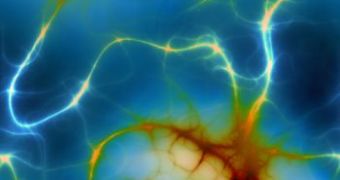Normally, neurons are cortical nerve cells that reside in the brain's gray matter, with only a few of them being scattered in the white matter, but in the case of people suffering from schizophrenia, there seem to be far more neurons in the white matter.
This is actually called the aberrant cellular localization phenomenon, and a new paper written by Yang Yang and colleagues, from the Schizophrenia Research Institute, Neuroscience Research Australia, the University of New South Wales and the Peking University Institute of Mental Health, Beijing, China, focused on studying it in detail.
These neuronal migration errors can occur in schizophrenia as a consequence of genetic and environmental factors.
So, the researchers used a specialized techniques involving staining cells, that allowed them to determine the distribution of nerve cells in brain tissue, in people suffering from schizophrenia, and compare it with tissue from people who did not carry this diagnosis before their death.
The results showed two important findings, coming from the analysis of the brain tissue in people with schizophrenia: abnormalities in the inhibitory neurons within the cortex and increases in neurons in white matter below the cortex.
The researchers highlight the importance of brain development for the emergence of symptoms associated with schizophrenia.
Professor Cyndi Shannon Weickert and Dr. Samantha Fung, explained that their “observations challenge the long held theory that increased neurons in the white matter might be remaining from a transient layer of cells.
“We suggest that, in schizophrenia, inhibitory neurons that were traveling to the cortex might actually be stuck at some stage in their development.”
“This study highlights the importance for schizophrenia of better understanding the molecular switches that control the migration of nerve cells and the development of the connections between nerve cells,” noted Dr. John Krystal, Editor of Biological Psychiatry.
Once the scientists will be able to understand the molecular factors that prevent the neurons from migrating into the cortex, they could develop treatments to prevent the inhibitory neurons from getting 'stuck' in the white matter.
The paper is published in the current issue of Biological Psychiatry.

 14 DAY TRIAL //
14 DAY TRIAL //